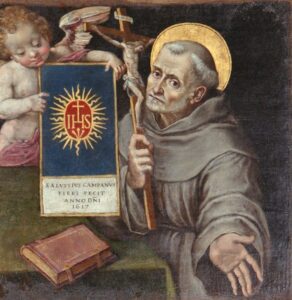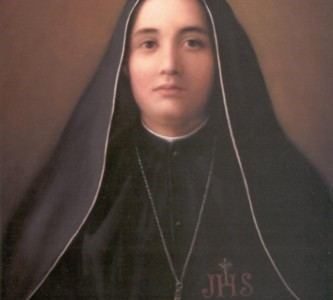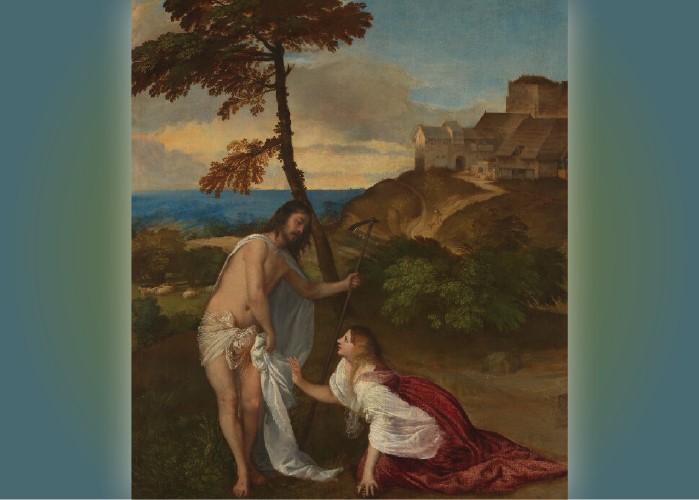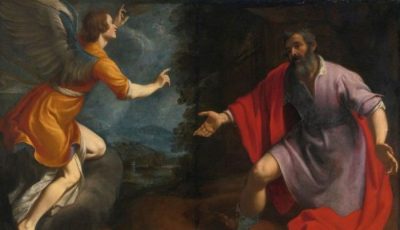
Saint Bernardine of Siena, commonly referred to as the “Apostle of Italy,” was heralded as
an eloquent preacher, missionary, reformer, and economist. He was born in 1380 to a noble family in Tuscany but was orphaned early in his life. In 1400, at the height of the great plague in Italy, he volunteered to care for the sick in the city of Siena, stopping only when he himself became ill.
In 1402 he entered the Franciscan order in Siena and was ordained to the priesthood in 1404.
For several years, he studied and lived the life of a quiet contemplative. In 1417, he was sent to Milan to help out at one of the parish churches. Here, Bernardine discovered his gift of preaching. News of his exciting sermons spread rapidly, and soon he had invitations to travel and preach all over the peninsula. He brought his enthusiasm for preaching the Good News to crowds of
thousands. During his ministry he was asked to be a bishop on three occasions. Each time he refused because he believed his gifts were best used as a missionary
Bernardine left a lasting symbol to the Church when he created the symbol, “IHS,” the first three letters of the name of Jesus in Greek. The letters were placed within an image of a blazing sun. It was a compelling visual aid to his listeners and the symbol began to appear in churches, homes and public buildings.
Bernardine was a scholar as well. He wrote a book on economics. On Contracts and Usury dealt with the justification of private property, the ethics of trade, the determination of value and price, the usury question and it offered a well-reasoned defense of entrepreneurship.
In 1430, he was elected vicar general of the Franciscans of the Strict Observance. During his term of office, many Franciscan monasteries that enjoyed a looser rule, changed to the strict observance to benefit from Bernardine’s charisma, wisdom and leadership. He added rigorous education programs to their daily routine and the community’s numbers grew dramatically.
St. Bernardine’s tireless commitment to spreading the Good News remained until the very end of his life. In 1444 he set out to preach in Naples. On the way he fell ill with fever. He died on the vigil of the Feast of the Ascension at age 64. His feast day is May 20.



